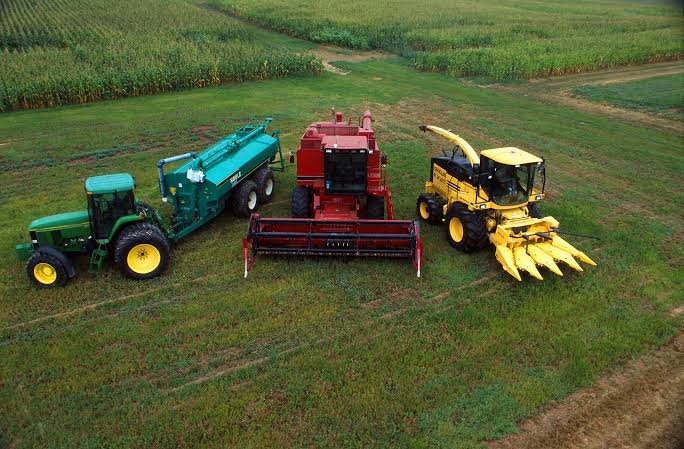Last Updated on June 10, 2023 by
Organic farming has recently gained popularity among those who are worried about their wellbeing and the planet, as well as those seeking new gourmet experiences. Transitioning to organic farming offers good possibilities in aspects of economic and environmental improvement and food variability. Another key advantage of organic agriculture is that natural food has better nutritional content than food cultivated with chemical additions.
With high pricing, many people choose to buy organic ingredients, with significant demand requiring an increased supply and the research of organic agricultural techniques. As a result, agricultural equipment suppliers in the uae possess a pivotal role in organic farming.
Table of Contents
What is organic farming?
Organic cultivation is a food production technique that promotes healthy items without ingredients that can harm individuals and the environment. Those contain, and are not restricted to, commercial poisons, insecticides, fertilizers, clones, GMOs, synthetic medicines, hormones, growth promoters, and other similar substances.
The primary concept of organic farming is to supply foodstuff with the highest nutritional content while using only allowed chemicals. The idea also mandates 100% pure grass for animals and its subsequent preparation without synthetic materials. In addition, organic farming procedures include field personnel care and the goal of preserving a harmonic equilibrium in the ecosystem to make it as healthy and fruitful as possible.
Organic Farming Fundamentals
Organic agricultural practices adhere to four fundamental principles that showcase their gravity: wellness, ecology, integrity, and concern. These are the concept’s driving power, interconnecting and enriching one another. Pesticides employed in organic agriculture, for example, are less harmful to the environment and therefore do not cause adverse effects within living creatures, hence enhancing health.
Agriculture ethics control all phases of the activity, covering cultivation, processing, distribution, preservation, and usage. There are no banned ingredients used.
Health or wellness:
The health factor within organic farming involves avoiding harmful chemicals that leave deadly leftovers on numerous levels, impacting microscopic ground creatures, plants, animals, especially mankind. Based on the traditional proverb, we might conclude that excellent soil generates healthy plants, and healthy plants promote a functional brain in a balanced body with excellent immunity, healing abilities, and no sickness endured.
Ecology:
The concept of ecology within farming entails using environmentally friendly strategies that promote soil health (preventing exhaustion, erosion, and deterioration) or eliminate natural contamination. It also entails providing suitable living scenarios for all biosphere members, as they are intimately linked. Furthermore, Eco technologies in agriculture help preserve the appropriate balance and conserve natural assets, such as restoring soil quality using non-synthetic materials (green compost and animal wastes), encouraging recycling, and increasing the genetic variety of species inside the region.
Integrity or fairness:
The fairness concept in organic agriculture supports a reasonable and fair approach toward all business attendees: farmers, providers, dealers, and customers. It fosters safe working and living environments and fulfills people’s demands with enough supply of high-quality food.
Fairness in agriculture also entails giving adequate nourishment and suitable habitat for cattle in accordance with their physiology. Cost policies must be both justifiable and cheap.
Care:
In farming, the concept of care supports resource conservation with future generations and the environment in mind. Any choice must emerge from prudence and prompt risk management.
Even if advances show to be efficient, organic farming supporters choose time-tested agricultural approaches. They now blend basic logic, trustworthy information, relevant innovations, and indigenous expertise.
Organic Agricultural Methods
The notion of organic agriculture necessitates rigorous adherence to set criteria that describe and limit appropriate practices. The following are examples of common and acceptable ones.
Spinning of crops:
Crop rotation entails altering the species grown on the same farm from season to season. This farming strategy may also involve a fallow time at some point in the future.
Crop rotation, as opposed to monoculture agricultural practices:
- Minimizes insect and weed outbreaks, as well as chemical toxicants to resolve the challenges.
- With various root structures, it reduces soil degradation.
- Protects land from depletion by increasing nutrient release through various plants, reducing synthetic fertilizer treatments prohibited within organic agriculture.
- Increases productivity while decreasing expenses.
Cover cropping:
This agricultural method entails covering the land with various plant types, perhaps for a specific season or eternally, partially, or entirely among crop columns. Using their root system to cover crops reduces soil degradation and increases water filtering and oxygenation. In addition, they help avoid weeding with top portions by shielding undesirable growth from sunlight.
Farm machinery items are useful in organic agriculture
Organic farming must now achieve various objectives, including being globally competitive, producing high-quality farm products, and achieving sustainability standards. Farm producers must have quick accessibility to agricultural equipment in need to stay competitive. In this situation, agricultural equipment dubai is important. Top Farmers confront a plethora of new challenges as well as new possibilities. Aside from profitability, they must adhere to environmental norms and laws and cope with active and passive consumer and lobbying group demands. They will also be inundated with data from multiple governments and business sources, making it extremely difficult to select acceptable technology. Farmers must also modify their production and planning techniques regarding agricultural regulations that reflect environmental factors.
A Quick Overview
Agricultural Equipment Tools and Organic Farming: A Complicated Relationship
Agricultural equipment tools have long been a staple of modern agriculture. They have made farming more efficient and allowed farmers to cultivate larger areas of land. However, when it comes to organic farming, the relationship between equipment tools and farming effectiveness is not so clear-cut.
Benefits of Agricultural Equipment Tools in Organic Farming
There are certainly benefits to using agricultural equipment tools in organic farming. For example, tractors and tillers can make it easier to prepare soil for planting, and irrigation systems can ensure that crops receive adequate water. These tools can also help with harvesting, which can be a time-consuming process for organic farmers who need to do it by hand.
Challenges of Using Agricultural Equipment Tools in Organic Farming
However, there are also challenges associated with using agricultural equipment tools in organic farming. For one, some tools can damage soil structure and harm beneficial microorganisms. Additionally, many organic farmers rely on cover crops and crop rotations to maintain soil health, which can be disrupted by heavy equipment.
Conclusion
Organic agriculture may keep challenging its opponents as more successful businesses establish themselves in other regions. Organic supporters are in question when new ethical problems arise, and the effort of assessing and upgrading organic agricultural systems is undertaken. The organic revolution has evolved from its modest origins as a community of farmers, producers, and devoted customers into a worldwide niche market. The organic revolution now has the chance to build more advantageous ties and connect more closely with all major participants in agricultural growth, thanks to new investors and diverse stakes.





















